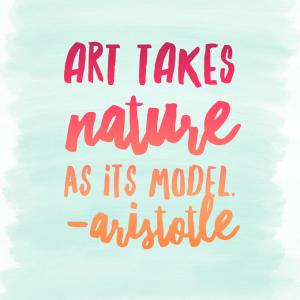Printing your own pictures may be a truly satisfying experience. It’s the ultimate step to making a picture and brings the work to life. It’s difficult to argue that photography is not an art once you print out an image and hold it in your hand. That is what I genuinely believe.

You’ll see and feel the number of labor that has gone into creating the image. It takes on a replacement life once you’ll physically hold it in your hand and becomes something special and meaningful.
If you have got not printed your work before, you actually must. So how will we do it? To breed images accurately there are some steps to follow before we act and print. This is applicable as to whether printing employing a lab or printing at home and can help to avoid being disappointed with the ultimate results.
Brightness Adjustment
Assuming Lightroom is that the editing weapon of choice, (other editors are very similar) the primary thing to try and do is create a virtual copy of the image. This acts as a print file without upsetting the first edit. Observing images on a screen, the superbly backlit monitor adds brightness to the image, even with a calibrated monitor, which creates an evenly illuminated picture. Once printed, the image is front lit and the light may be inconsistent and therefore the image is in danger of looking dull. This may be compensated for by increasing the exposure by a couple of third to half a stop. Not an excessive amount to blow out the highlights, but barely enough to allow the brightness a bit boost and avoid disappointment.
Exporting
Printing at home is straightforward because we will print directly from Lightroom using the print module. The high-end Canon printers also include Canon Print Studio Pro. This Lightroom plugin is meant to figure with those specific printers and gives ultimate control over your prints.
The lab won’t be ready to read a raw file therefore the photo will have to be exported as a picture file. Most good labs accept a good range of file types to produce ultimate versatility to customers. However, to urge the best quality, the preferred file format to use could be a TIFF file. These are uncompressed so no information is lost prefer it is with a JPEG. The file size is going to be much bigger but the results also will be more accurate.
Colour Accuracy
Accurate color is very important because we would like our images to print bent on match how they were edited on the screen. A pretty orange and pink sunset is going to be ruined with a print containing a nasty green tinge. There’s plenty happening to travel from screen to paper, so we must use ICC profiles to create it easily. ICC profiles are plugins for photo editors that are supported the sort of printer being employed and therefore the form of paper we elect. Once installed into software like Lightroom we will enable soft proofing within the develop module, select the paper being employed, and therefore the ICC profile will simulate how the print will look on paper. Adjustments can then be made as needed before print.
ALSO READ: 4 Art-Themed Destinations For Your Summer Road Trip
Paper Type
Generally, there are three sorts of paper:
- Glossy
- Semi-Gloss
- Matt
The type and quality of the paper being employed can massively affect the ultimate print. It’s substantially a subjective thing and something that needs personal experimentation. The glossy finish works perfectly for the water drop images I create as it helps the colors pop. It provides them extra impact as well.
Semi-Gloss – I feel is my favorite. I’ve got been using Canson Baryta for years and it’s just a powerful paper. It feels and appears extremely professional and also the prime quality paper works extremely well on a large range of images. The bulk of landscape prints I sell are printed on this.
Matt or writing paper – Good cotton writing paper is that the best bet for a matt finish. Good rag papers will have a high DMax rating which implies they hold the blacks o.k. Rag papers are perfect for black and white images because it holds really strong contrast.
Borders
Many photographers prefer to have a white border around the fringe of their print. I prefer a borderless print if possible. Borderless printing maximizes the dimensions of the print and once it’s in an exceedingly frame, with a mount, the work encompasses a border but also maximizes the scale of the paper. A border is often useful though. It permits you to put a footnote on the print, makes it easier to handle and a few people prefer the double border within the frame. Some printers also don’t print borderless with certain forms of paper like heavy writing paper and also when employing a custom paper size. A border also makes it easier to connect to the mount.
Final Thoughts
Printing is an in-depth topic and far from being subjective. The simplest thing to try and do is to begin printing and experiment for yourself. One thing is certain, you may not regret it once you’re holding your physical add hand.




